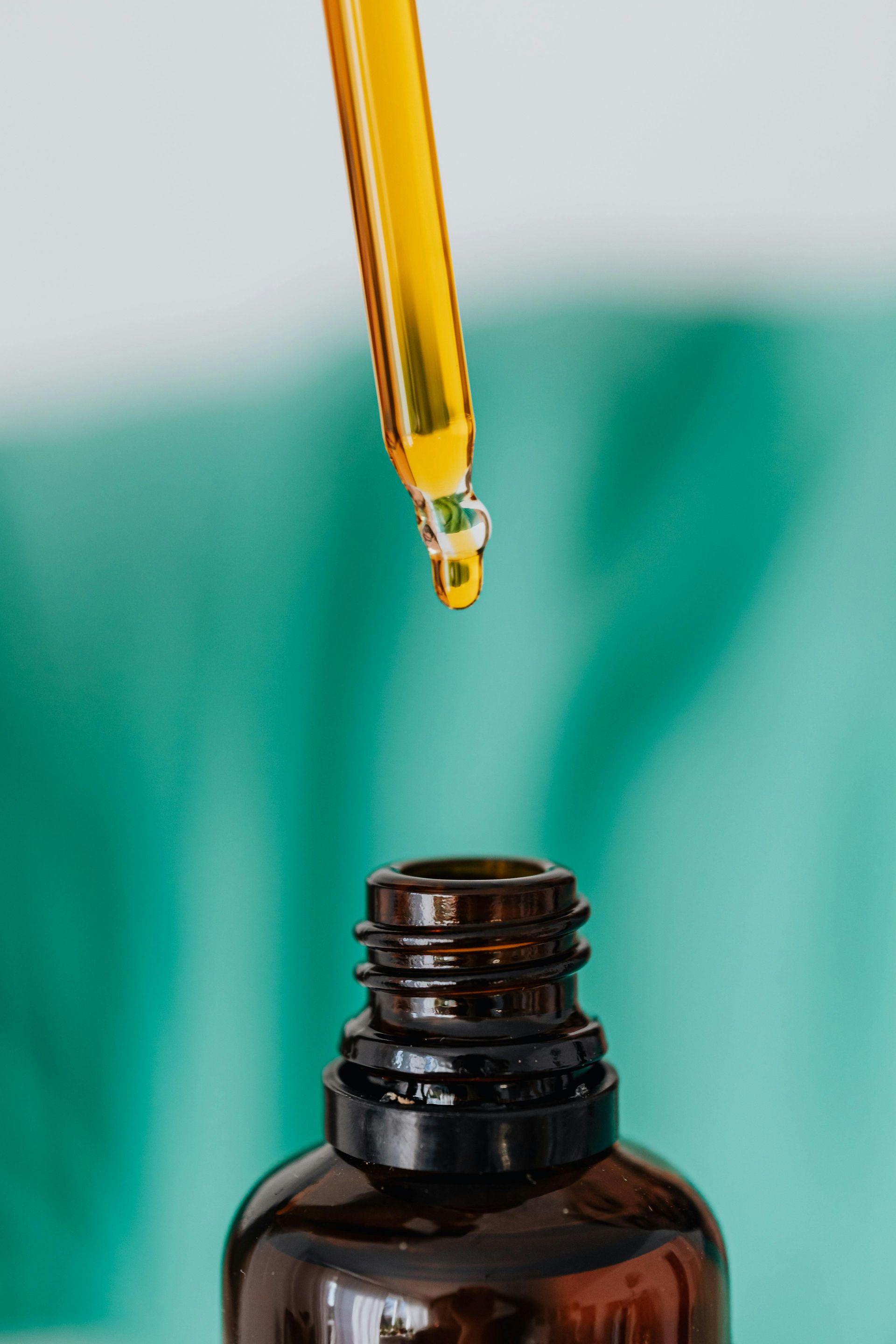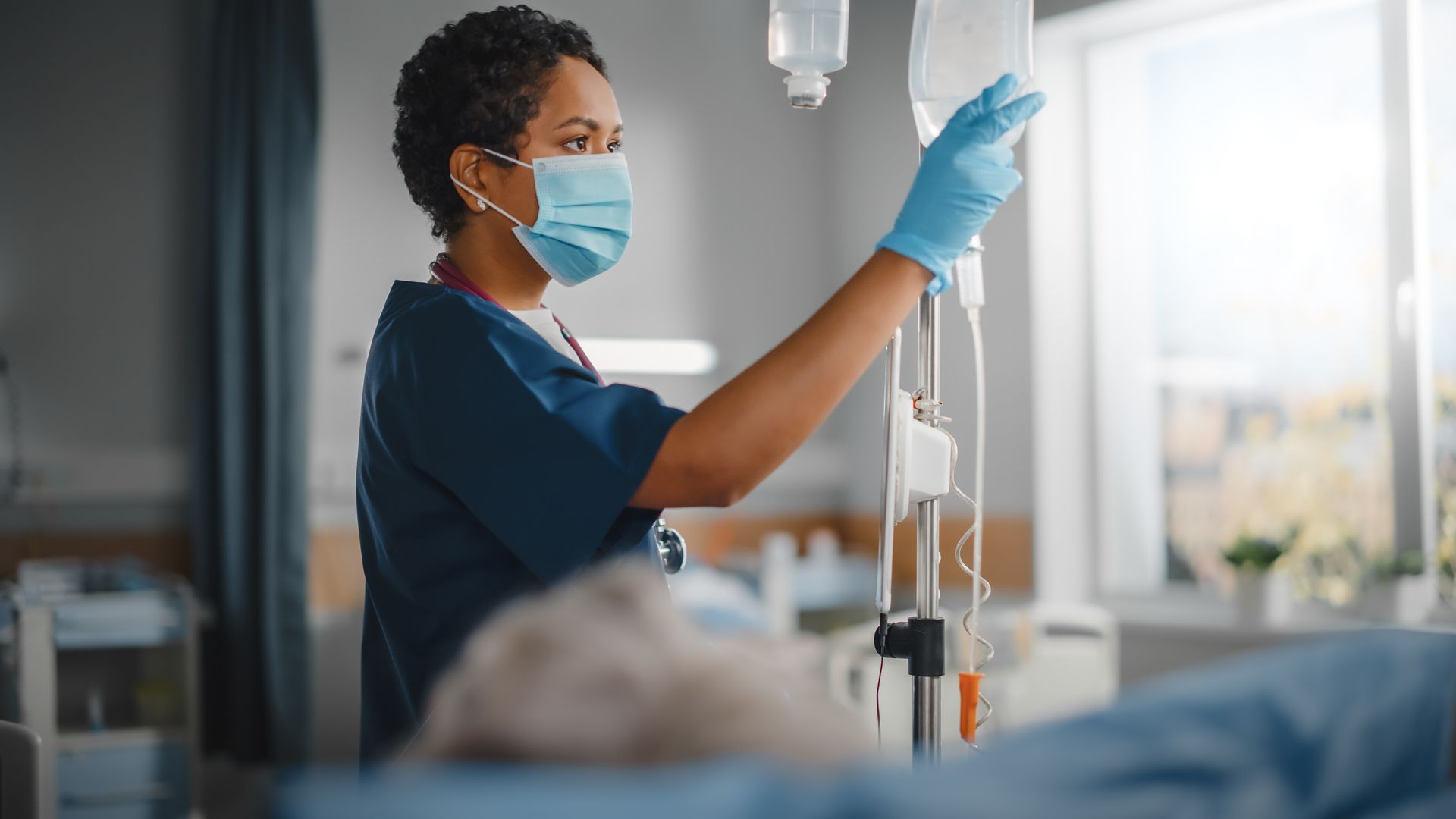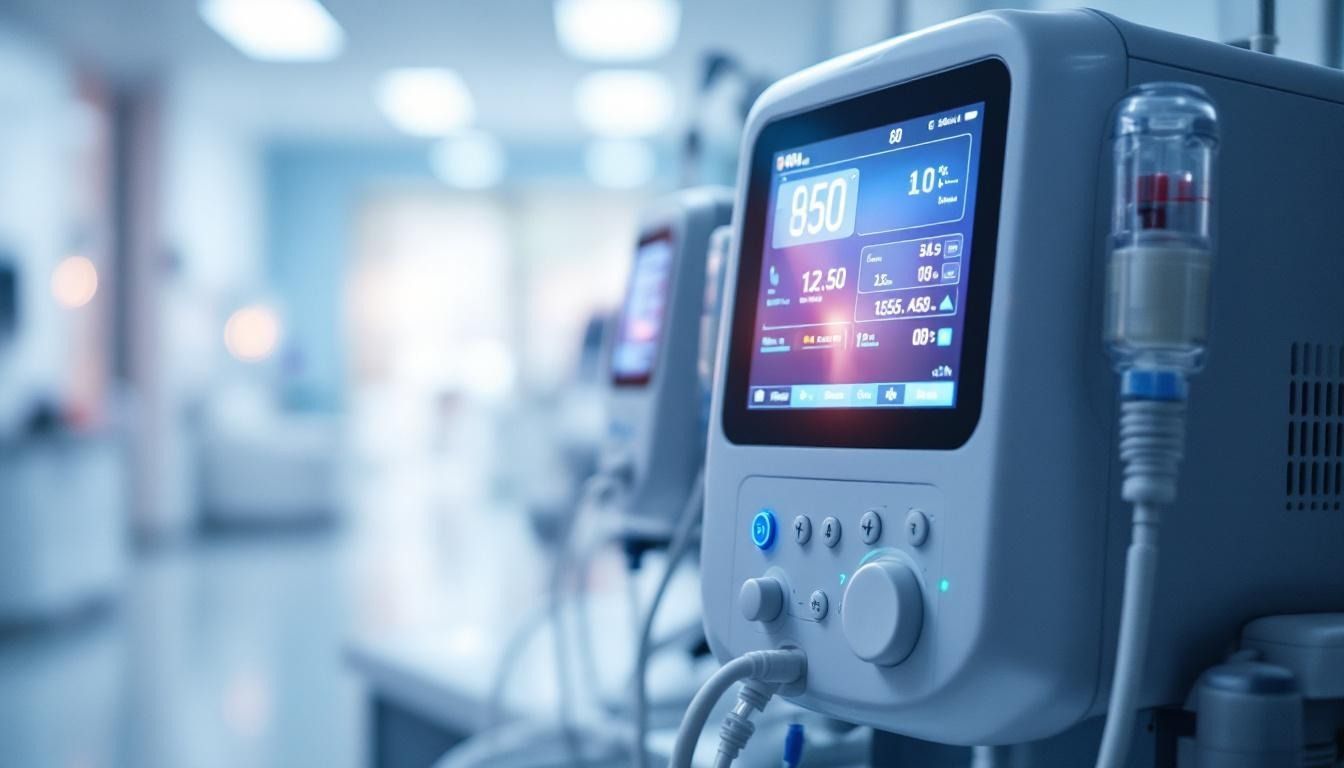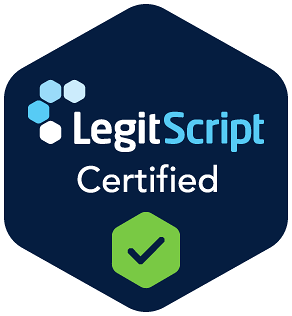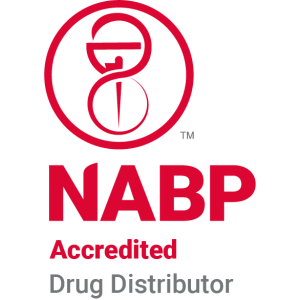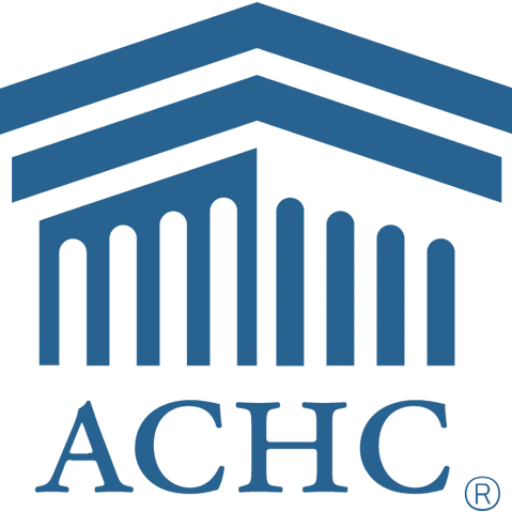Home TPN therapy guidelines

Understanding Home TPN: The Essentials
Total Parenteral Nutrition (TPN) therapy can be a lifeline for patients unable to meet their nutritional needs through regular eating. Administered through a central venous catheter (CVC) directly into the bloodstream, TPN provides complete nourishment to support patients' health and well-being. While hospitals have protocols for managing TPN, home administration offers a comfortable, independent alternative for many. This narrative will cover essential guidelines and educational resources for safely administering TPN at home, addressing critical questions and concerns.
Introduction to Home TPN Therapy

What is Total Parenteral Nutrition (TPN)?
Total Parenteral Nutrition (TPN) is a method of delivering vital nutrients directly into the bloodstream through a central venous catheter. This therapy is essential for individuals who cannot absorb sufficient nutrients because of conditions like short bowel syndrome, Crohn's disease, or severe malnutrition. TPN bypasses the gastrointestinal tract, providing a comprehensive nutrient mixture that includes carbohydrates, proteins, fats, vitamins, and minerals.
Importance of home TPN
Home TPN allows patients to receive necessary nutrition in the comfort of their own environment while maintaining an active lifestyle. With careful management and adherence to safety protocols, patients can thrive despite their medical challenges. The administration of TPN can be tailored to each individual's needs, helping to ensure optimum health and wellbeing.
Patients must be educated on proper procedures, including meticulous hygiene practices during TPN preparation and administration. This emphasizes the role of caregivers and healthcare teams in providing ongoing support. Monitoring weight, blood sugar levels, and signs of complications play a crucial role in the effectiveness of home TPN, ensuring that patients can safely manage their nutritional needs without frequent hospital visits.
| Aspect | Details | Importance |
|---|---|---|
| Nutritional Delivery | Directly administers nutrients intravenously | Bypasses the GI tract |
| Management | Requires caregiver training and support | Improves quality of life |
| Monitoring | Regular checks of weight and lab values | Ensures safety and efficacy |
Preparing for Home TPN: Guidelines and Equipment

TPN Preparation
Preparing Total Parenteral Nutrition (TPN) at home requires careful attention to detail to ensure that the nutrient mixture is safe and effective. Patients should follow these fundamental steps:
- Gather Supplies : Ensure all necessary materials are available, including the TPN bag, infusion pump, IV tubing, and sterile syringes.
- Inspect the TPN Bag : Before use, check the bag for the correct nutrient mixture as prescribed by your healthcare provider. Ensure that the bag is not expired and examine it for any signs of leakage, cloudiness, or particulate matter, as these can indicate contamination.
- Warm the TPN : Allow the TPN solution to gradually warm to room temperature for 2 to 3 hours after removing it from the refrigerator; do not use any heat sources like microwaves as they can damage the solution.
- Wash Your Hands : Strict hand hygiene is essential. Wash your hands thoroughly before preparing TPN to minimize the risk of infection.
Sterility and Safety
Safety and sterility in preparing and administering TPN cannot be overstated. Here are crucial guidelines to maintain:
- Clean Environment : Prepare TPN in a clean area, avoiding kitchens or bathrooms where contamination is more likely.
- Use Sterile Equipment : Always utilize sterile syringes and IV tubing. When adding medications, clean the medication port properly to prevent any bacterial contamination.
- Monitor Health : Regularly keep track of vital signs, including weight and blood sugar levels, to ensure no complications arise from the therapy.
Basic Rules for Handling and Using TPN at Home
To summarize, basic rules for safely handling and using TPN at home include:
- Washing hands thoroughly before preparation.
- Properly storing the TPN solution and allowing it to reach room temperature.
- Checking for any damage or contamination prior to use.
- Maintaining sterile conditions throughout the preparation and administration processes to prevent infections.
Storage and Handling of TPN Solutions
Proper Storage Methods
To ensure the safety and efficacy of Total Parenteral Nutrition (TPN) solutions, proper storage is crucial. TPN bags should be kept in the refrigerator at temperatures ranging from 36°F to 46°F. It is essential to routinely check these bags for any signs of leaks or cloudiness, which could indicate spoilage or contamination.
Warming TPN Solutions
Before administration, TPN solutions should be allowed to reach room temperature. Patients should remove TPN solutions from the refrigerator 2 to 3 hours prior to use, allowing them to warm naturally. The use of microwaves or direct sunlight to heat TPN solutions is discouraged, as these methods can compromise the integrity of the nutrients.
Safety Procedures
Handling TPN solutions requires strict adherence to safety and sanitary procedures. Patients must maintain a clean environment for storage and preparation, steering clear of areas such as bathrooms or environments with pets. Additionally, thorough handwashing before and during the preparation process is vital to prevent contamination. When adding medications to the TPN bag, it’s important to inspect all components carefully, verifying that there is no cloudiness or separation.
In summary, following these guidelines for the storage and handling of TPN solutions significantly minimizes the risk of infection and ensures that patients receive safe and effective nutrition therapy while managing their health at home.
| Aspect | Guidelines for Safe Storage | Important Notes |
|---|---|---|
| Storage Temperature | Keep in refrigerator (36°F - 46°F) | Check regularly for leaks or cloudiness |
| Pre-Use Preparation | Warm to room temperature (2-3 hours) | Avoid microwaves/direct sunlight for warming |
| Sanitation Practices | Maintain clean preparation area | Wash hands thoroughly before and during preparation |
Administering TPN: Step-by-Step Process
Administration Steps
Total Parenteral Nutrition (TPN) is a vital treatment option for patients who cannot obtain sufficient nutrition through conventional means. Administering TPN requires careful adherence to hygiene protocols to minimize infection risks.
- Gather Supplies : Ensure all necessary materials, including TPN bags, IV tubing, syringes, and sterile alcohol pads, are ready and accessible.
- Check the TPN Bag : Before use, inspect the TPN bag for correct nutrient composition and expiration date. Do not use expired bags.
- Washing Hands : Thoroughly wash your hands with soap and water, and dry them with a clean towel.
- Prepare the Workspace : Select a clean, sanitized area away from pets and bathrooms to set up the TPN.
Infusion Process
Administering TPN at home involves using a central venous catheter (CVC), a method that typically takes 10 to 12 hours, often during nighttime for the patient's convenience.
- Priming the IV Tubing : Connect the IV tubing to the TPN bag and prime the tubing to remove air bubbles.
- Flushing the CVC : Before connecting the TPN bag, flush the CVC with normal saline to ensure patency and clear out any residual medications.
- Connecting the TPN : Once the CVC is ready, connect the primed IV tubing to the CVC securely, taking care to maintain sterile techniques throughout.
- Monitoring During Infusion : Over the course of the infusion, remain vigilant for any signs of complications, such as fever or pain around the catheter site.
- Discontinuing the Infusion : After the infusion is complete, disconnect the tubing and flush the CVC again to prevent blockages.
These steps, when followed closely, can ensure that TPN is administered safely, allowing patients to thrive and maintain their nutritional needs in a home setting.
Managing and Monitoring Health on TPN

What should patients monitor while on TPN therapy?
Patients receiving Total Parenteral Nutrition (TPN) therapy need to vigilantly monitor several health parameters. It's crucial to keep track of weight , blood sugar , and temperature regularly. These metrics help ensure that nutrients are being absorbed effectively while also providing an early warning system for potential complications. For instance:
- Weight: Regular weight checks can indicate changes in fluid retention or nutritional intake.
- Blood Sugar: Monitoring blood glucose levels helps prevent complications such as hyperglycemia or hypoglycemia, which can occur with TPN.
- Temperature: Daily temperature checks are vital to detect early signs of infection, particularly since TPN patients are at increased risk due to catheter use.
Importance of routine checks
Routine health checks are not just beneficial but essential for individuals on TPN. They allow for timely adjustments to therapy and help healthcare providers assess the effectiveness of the TPN. Keeping a monitoring log
can be a useful tool to track these parameters and report them to the healthcare team. Regular blood tests
should also be part of the management plan, as they provide insights into electrolyte balance and overall nutritional status.
In summary, diligent monitoring facilitates effective TPN management and enhances patient safety.
Troubleshooting Common TPN Complications

What should patients do if they encounter problems during TPN therapy?
Patients on Total Parenteral Nutrition (TPN) must be vigilant and proactive in troubleshooting any complications that may arise during therapy. It is crucial for patients to have a clear understanding of what to look for and the appropriate steps to take. If patients experience any severe symptoms such as fever, chest pain, or shortness of breath, they should seek immediate medical attention. These symptoms could indicate serious complications requiring prompt intervention.
Apart from these emergencies, patients should also be equipped with advice for common issues, like catheter blockages. Maintaining a record of daily activities, blood sugar levels, and any unusual symptoms can be beneficial for healthcare providers when diagnosing problems.
Addressing Issues
Identifying issues early can prevent complications. For example:
- Catheter Blockage : Patients can try gentle flushing with saline, ensuring that the technique used does not exert excessive pressure.
- Temperature Fluctuations : Ensure that TPN is stored and infused at the right temperatures to avoid complications from cold fluids.
- Signs of Infection : Watch for redness, swelling, or discharge around the catheter site. Notify healthcare providers immediately if these are observed.
When to Contact Healthcare Providers
It is imperative that patients remain in close communication with their healthcare teams. Keeping an open line for questions not only addresses immediate concerns but also enhances overall treatment safety. Patients should report any unusual symptoms or concerns about their TPN management without hesitation.
Education and Training for Safe Home TPN
What education is available for patients receiving TPN?
Comprehensive training for patients on Total Parenteral Nutrition (TPN) is crucial for ensuring safety and efficacy during home therapy. Educational programs cover various aspects of TPN administration, including:
- Fundamentals of TPN : Understanding the purpose and importance of TPN in meeting nutritional needs when oral intake is not possible.
- Complication Recognition : Patients are trained to recognize signs of infection or other complications, such as fever or catheter issues. Knowing when to contact healthcare providers is emphasized.
- Routine Testing : Instruction on conducting necessary routine tests, including monitoring weight, blood sugar levels, and vital signs to ensure optimal management of the therapy.
- Sterile Techniques : Best practices for maintaining a clean environment during TPN preparation and administration are taught to reduce infection risks.
In addition to self-monitoring and management, patients are encouraged to keep detailed logs of their metrics, improving their capacity to engage in their health management actively.
What training is available for caregivers?
Caregivers play a vital role in the success of TPN therapy. Training for them includes:
- Hands-on Training : Caregivers receive practical training, often involving the initial setup of TPN, including central line care and routine infusion protocols.
- Emergency Procedures : Caregivers are educated on protocols for emergency situations, ensuring they are equipped to handle issues as they arise.
- Ongoing Support : Regularly scheduled visits from home infusion nurses support caregivers and allow for adjustments based on patient feedback and needs.
With these educational resources, both patients and caregivers can confidently manage TPN therapy in the home setting.
Cost and Insurance Considerations for Home TPN
What is the cost of TPN at home?
Home Total Parenteral Nutrition (TPN) can be a significant financial commitment for patients and families. Typically, the costs can exceed $200 per day, which accumulates to an annual expense ranging from $7,000 to $15,000. These costs encompass not only the TPN solutions but also the necessary supplies and potential additional healthcare services required for safe home administration.
Insurance coverage
For many patients, navigating the cost of home TPN involves understanding insurance options. Medicare Part B plays a vital role in providing financial assistance. It generally covers 80% of the approved costs for parenteral nutrition at home, provided that specific medical criteria are met. This coverage is crucial, especially for individuals who must rely on home TPN due to chronic conditions or longer-term nutritional support needs.
To qualify for Medicare coverage, thorough documentation of medical necessity and previous attempts to utilize the gastrointestinal tract for nutrition is essential. Additionally, private insurance providers may have varying policies regarding home TPN management, so consulting with insurance representatives is beneficial to clarify coverage options and out-of-pocket costs.
{: | Aspect | Cost/Details | |----------------------------|-------------------------------| | Daily cost | Over $200 | | Annual cost | $7,000 to $15,000 | | Medicare coverage | 80% of approved costs | | Medical criterion requirements | Must document medical necessity |}|
Understanding these financial and insurance aspects can help patients and caregivers prepare for the economic implications of managing home TPN.
Role of Healthcare Professionals in Home TPN
Healthcare provider responsibilities
Healthcare professionals play a critical role in the successful administration of Total Parenteral Nutrition (TPN) at home. They are responsible for assessing patients’ eligibility for home therapy, providing comprehensive education on how to manage TPN, and ensuring that caregivers are adequately trained. This training includes understanding the infusion process, equipment handling, and recognizing potential complications. Regular follow-up visits are essential for monitoring patients’ health markers, such as blood glucose and nutritional status, and to make any necessary adjustments to TPN formulations.
Support systems
An interdisciplinary team is vital for maintaining safety and improving outcomes in home TPN administration. This team may include nurses, pharmacists, dietitians, and physicians working in collaboration. They create tailored nutrition plans, address potential drug interactions, and monitor side effects. Open communication within the support system ensures that any issues are resolved quickly, enhancing patient confidence and minimizing risks.
For example, healthcare providers are also responsible for establishing protocols for handling and storing TPN solutions, which are crucial for infection prevention. By providing emotional and practical support, they help create a stable home environment conducive to effective therapy.
Can TPN be administered at home by healthcare professionals?
Yes, healthcare professionals can oversee home TPN administration, ensuring safe handling and adequate patient education, with an emphasis on the importance of a trained multidisciplinary team.
Nutritional Components and Customization of TPN Solutions
What comprises a TPN solution?
Total Parenteral Nutrition (TPN) is a critical therapy providing essential nutrients for individuals unable to eat normally. A standard TPN solution includes several vital components:
| Nutrient Type | Purpose | Examples |
|---|---|---|
| Carbohydrates | Primary energy source | Dextrose |
| Proteins | Tissue repair and immune function | Amino acids |
| Fats | Energy source, hormone production | Lipid emulsions |
| Electrolytes | Maintain fluid balance and nerve function | Sodium, potassium, magnesium |
| Vitamins | Overall health and metabolic function | A, C, D, E, K |
| Minerals | Bone health and metabolic processes | Calcium, phosphorus |
| Water | Hydration and solvent for nutrients | Water as a primary solvent |
Each ingredient in this mixture is customized based on the patient's specific needs, which may vary due to factors like age, gender, and underlying health conditions.
Tailored nutrition plans
Home TPN involves creating personalized parenteral nutrition formulas in consultation with medical professionals. This tailored approach ensures that patients receive adequate calories, proteins, and fluids essential for recovery and ongoing health.
Monitoring blood tests like nutrient levels helps in making necessary adjustments to these formulas, ensuring optimal patient outcomes. By customizing TPN solutions, healthcare providers enhance the likelihood of maintaining patient well-being and preventing malnutrition.
Infection Prevention and Safe Use of Catheters

What steps can be taken to prevent infections with TPN therapy?
To ensure safety during Total Parenteral Nutrition (TPN) therapy, strict infection control measures are vital. Here are some critical steps:
- Sterile Techniques : Always use sterile equipment and maintain a clean environment when preparing TPN solutions and handling catheters.
- Hand Hygiene : Thoroughly washing hands before and during the preparation of TPN is crucial. Alcohol-based hand sanitizers can also be effective.
- Central Venous Catheter (CVC) Care : Proper care of the catheter site is essential. Patients should regularly check for any signs of infection, such as redness, swelling, or discharge, at the insertion site.
- Regular Monitoring : Monitoring for symptoms that could indicate infection is necessary. Symptoms such as fever, chills, or unexplained pain should prompt immediate communication with a healthcare provider.
- Educational Support : Patients and caregivers should be educated on infection prevention protocols, including how to recognize signs of complications and the importance of prompt reporting.
Regular assessments and adhering to established guidelines can significantly reduce the risk of infection during TPN therapy.
Guidelines for Nurses in Administering TPN
What guidelines exist for TPN administration for nurses?
Nurses play a critical role in the administration of Total Parenteral Nutrition (TPN), ensuring that patients receive proper nutritional support while minimizing risks. To meet these responsibilities effectively, several key protocols must be adhered to:
- Hand Hygiene : Prior to any procedure, nurses should wash their hands thoroughly to prevent infection. This is crucial when preparing to manage TPN solutions or handling central venous catheters (CVC).
- Inspection of TPN Bags : Nurses must inspect TPN bags before administration, ensuring the nutrient mixture matches what was ordered by the healthcare provider and checking the expiration date. If there are any signs of cloudiness, leaks, or particulate matter, the mixture should be discarded immediately.
- Sterile Handling of Catheters : Maintaining sterility during catheter insertion and management is imperative. Nurses should use sterile equipment and techniques, alongside proper disposal of sharps to avoid contamination.
- Monitoring and Patient Interaction : Continuous monitoring of patient responses during and after the infusion is vital. Any signs of infection or complications, such as unexplained fever or pain, should prompt immediate communication with the healthcare team.
Training for Care Providers
Training is essential for any caregivers involved in administering TPN. Nurses should educate them about the procedures outlined above and include information specific to:
- Nutritional Management : Caregivers should understand the nutritional needs of the patient and the importance of following the TPN formula closely, including any medications or vitamins that may need to be added.
- Monitoring Protocols : Families should be trained to track weight, blood sugar, temperature, and fluid intake/output to ensure optimal health while on TPN therapy.
- Emergency Procedures : Caregivers must know how to respond to potential complications by calling healthcare providers at the first sign of issues.
By following these guidelines, nursing teams can provide safe and effective TPN administration, ensuring patients receive vital nutritional support in a sterile and responsive manner.
Transitioning from Hospital to Home: Support and Challenges
How do patients transition from hospital to home TPN therapy?
Transitioning patients from hospital-based care to home Total Parenteral Nutrition (TPN) requires careful planning and education. When patients are discharged, they must be equipped with the knowledge to manage their nutritional needs independently. This includes understanding how to use infusion devices effectively, how to administer TPN, and what steps to take in the event of complications.
Key components of this transition involve a multidisciplinary support system. Healthcare providers typically arrange regular visitations to assist patients and their families during the early stages at home. These visits involve monitoring the patient’s health, ensuring that they are following protocols correctly, and providing ongoing education about nutrition and safety measures.
Effective training for caregivers is also essential. Home training programs often teach them to handle infusion equipment and monitor their relative's well-being. This education emphasizes hygiene practices, proper storage of TPN supplies, and awareness of infection signs, vital for maintaining safety during home administration.
Furthermore, caregivers learn to document vital signs and any changes in the patient’s condition, ensuring prompt communication with healthcare professionals if issues arise. This structured approach helps instill confidence in the patients and their families, making the transition to home therapy more manageable.
Accessing TPN Guidelines and Resources
Where can I find a PDF of TPN guidelines?
Finding Total Parenteral Nutrition (TPN) guidelines that are accessible and reliable is essential for patients and healthcare professionals alike. These guidelines are primarily available through reputable organizations such as the American Society for Parenteral and Enteral Nutrition (ASPEN) and the European Society for Clinical Nutrition and Metabolism (ESPEN). Their websites offer comprehensive documentation outlining standards and protocols for TPN administration, including best practices and safety measures.
In addition to organizational websites, academic databases like PubMed serve as valuable resources where a variety of TPN research articles and reviews are published. Users can search for specific guidelines or recent studies related to TPN.
Educational Resources
Patients, caregivers, and healthcare providers can benefit from a variety of educational materials available online. Many medical institutions provide resources, including instructional videos, brochures, and step-by-step guides on TPN administration and management.
Moreover, training programs or workshops hosted by health care providers are invaluable for hands-on learning, ensuring that both patients and caregivers can manage TPN safely. Engaging with a multidisciplinary nutrition support team can also offer tailored advice and resources to enhance confidence in administering home TPN safely.
| Resource Type | Description | Location |
|---|---|---|
| Organizational Docs | ASPEN/ESPEN guidelines for TPN | ASPEN or ESPEN websites |
| Research Articles | In-depth studies and reviews related to TPN | PubMed or academic databases |
| Educational Materials | Brochures, videos, and guides on TPN administration | Medical institution websites |
| Training Programs | Workshops for practical TPN management training | Local healthcare providers or institutions |
Empowering Patients and Caregivers
Providing safe and effective Total Parenteral Nutrition at home requires comprehensive training, adherence to detailed guidelines, and coordination with healthcare professionals. The transition from hospital to home holds challenges that can be managed with the right support systems and education. By following established TPN protocols, patients and caregivers can ensure nutritional needs are met safely, enhancing the quality of life for those dependent on TPN. Always consult with medical professionals for personalized guidance and support to complement these practices.
References
- Home Total Parenteral Nutrition (TPN)
- [PDF] Total Parenteral Nutrition: Home Care Guide - Northwestern Medicine
- Your guide to home total parenteral nutrition therapy - Coram
- A Complete Step-by-Step Guide to Administering TPN at Home
- [PDF] ESPEN practical guideline: Home parenteral nutrition
- [PDF] Your guide Home total parenteral nutrition therapy - Coram
- Home Total Parenteral Nutrition (Home TPN) - Nutrishare
- Home TPN Therapy Guide - AmeriPharma® Specialty Care
- [PDF] Navigating Home Care: Parenteral Nutrition—Part Two
- Patient Instructions: Home Parenteral Nutrition Therapy



